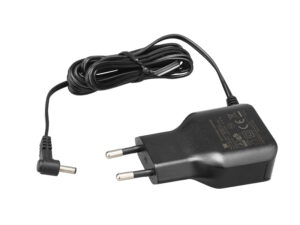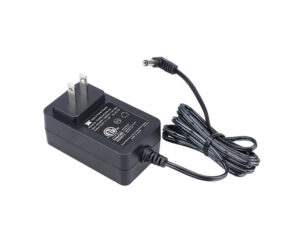The accuracy of the power adapter generally refers to the voltage regulation accuracy, including the output DC voltage accuracy range, the output DC current regulation rate, and the output DC ripple noise. Ripple noise includes maximum ripple voltage and maximum ripple noise voltage.

The voltage regulation accuracy refers to the output DC voltage accuracy range of the output voltage of the power adapter. Generally, this range is ±5%, which is also the international industry standard. The output voltage range of the power adapter is ±5% of the nominal output voltage, such as a 5V power supply. The output voltage range of the adapter is: 4.75-5.25V, the output voltage range of the 12V power adapter is: 11.4-12.6V, the output voltage range of the 19V power adapter is: 18.05-19.95V, the output voltage range of the 24V power adapter is: 22.8- 25.2V.
The voltage stability factor of the power adapter, under the condition of constant load current and ambient temperature, the relative change of the input voltage causes the relative change of the output voltage. The voltage regulation rate of the power adapter, when the relative change of the input voltage is +10%, the relative change of the output voltage, the voltage stability factor and the voltage regulation rate indicate the influence of the input voltage change on the output voltage, so only one of them needs to be tested.
Adapter output resistance and current regulation rate, the output resistance of the power adapter is the same as the output resistance of the amplifier, and its value is the absolute value of the ratio of the output voltage to the output current when the input voltage is constant. Current regulation, relative change in output current from 0 to maximum output voltage. Output resistance and current regulation represent the effect of load current changes on the output voltage.
Since the switching tube of the switching power supply works in a high-frequency switching state, during each switching process, the electric energy is "pumped" from the input end to the output end, and the charging and discharging process capacitor is formed at the switching tube. output, causing the output voltage to rise. Fluctuation, and the frequency of this fluctuation is the same as the switching frequency of the switching tube, this fluctuation is the output ripple, which is the AC component superimposed on the output DC, and the amplitude of the ripple is the peak-value AC component. peak. Noise is a high-frequency pulse train generated by the switching power supply itself, which is caused by the sharp pulses generated when the switch is turned on and off. The frequency of the noise is much higher than the switching frequency, and the magnitude of the noise voltage is largely related to the topology of the switching power supply, the windings of the transformer, the parasitic parameters in the circuit, and the external electromagnetic environment. During testing, it is related to the layout of the PCB. The ripple and noise waveforms can be seen with an oscilloscope. The frequency of the ripple is the same as the switching frequency. , the frequency of the noise is twice the switching frequency. The sum of the peak-to-peak value of the ripple voltage and the peak-to-peak value of the noise voltage is the ripple noise voltage, and its unit is mVp-p.





